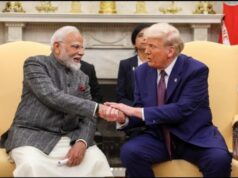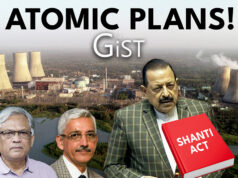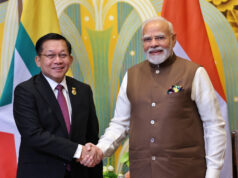The 1970s, my professor once said, belonged to two giants: Amitabh Bachchan and Russia. In the labyrinth of global geopolitics, India finds itself at a pivotal crossroads. On one side, it maintains an enduring friendship with Russia, rooted in decades of shared history and strategic cooperation. On the other, it seeks to strengthen ties with the West, particularly the United States, as it navigates the evolving complexities of the Indo-Pacific region.
The recent diplomatic engagements of India’s National Security Advisor, Ajit Doval, and Prime Minister Narendra Modi’s visit to Russia in July this year, underscore the delicate balancing act India must perform in the face of an increasingly polarized world order but the equation does not come without its questions.
Ajit Doval’s attendance at the BRICS (Brazil-Russia-India-China-South Africa) meeting of national security advisors in St. Petersburg marks a critical moment in India’s foreign policy. The meeting, which saw Doval engage in comprehensive discussions with his Russian counterpart Sergei Shoigu, aimed to explore “off-the-battlefield” solutions to the ongoing Ukraine conflict.
This diplomatic maneuver came shortly after Modi’s visit to Russia, a trip that concluded just before the NATO Summit in Washington—a telling sign of India’s effort to maintain its strategic autonomy amid global tensions.
Russian President Vladimir Putin’s remarks about the potential role of China, India, and Brazil as mediators in peace talks for the Ukraine conflict further highlight India’s unique position. These comments come ahead of the BRICS leaders’ summit in Kazan, scheduled for October 22-24, where Modi, Chinese President Xi Jinping, and Brazilian President Luiz Inácio Lula da Silva are expected to meet. As the international community looks toward BRICS to play a role in fostering dialogue, India’s stance becomes ever more consequential.
India Russia Relationship
India’s relationship with Russia is not merely a contemporary strategic alignment; it is a bond forged over seven decades of diplomatic and military cooperation. This friendship was born in the crucible of the Cold War, shaped by India’s need for strategic autonomy and Moscow’s desire to counterbalance Western influence in Asia.
The Soviet Union’s support for India began with economic assistance—such as the construction of steel plants in Bhilai and Bokaro—after negotiations with the West failed. This economic cooperation expanded to military collaboration following the Sino-Indian War of 1962, with the USSR emerging as India’s principal weapons supplier. The relationship was further solidified by the Sino-Soviet split in the late 1960s, as both India and the Soviet Union viewed China as a common threat.
The high point of this partnership was the 1971 Treaty of Friendship and Cooperation, signed when the United States and China were aligning against India during the Bangladesh Liberation War. Throughout these decades, India and Russia have orbited each other in a complex dance, influenced by the gravitational pulls of the West and China.
Although the Soviet Union supported India during its most vulnerable years, New Delhi’s position has since transformed significantly. Now one of the world’s biggest arms importers, India has a variety of choices from North America, Europe, and even the Middle East. Between 2015 and 2019, Russia’s share of India’s defense market decreased from 72 percent to 56 percent, reflecting this diversification.
However, India’s current focus extends beyond purchasing arms; it aims to develop its own technological prowess. This strategy involves not only manufacturing certain equipment domestically but also collaborating with international researchers and scientists to advance Indian intellectual capabilities.
Testing Times
In recent years, India and Russia’s worldviews began converging once again, particularly in their mutual calls for a multipolar world order and criticism of U.S. dominance. Russia saw India not only as a partner to counterbalance American influence but also as a hedge against its growing dependency on China. This sentiment was reflected in Russia’s 2021 National Security Strategy, which equated China and India as key partners.
However, the dynamics of this relationship have been tested since the onset of the Ukraine war in 2022. India’s neutral stance in the conflict—abstaining from UN resolutions condemning Russia and capitalizing on Western sanctions by becoming a major importer of discounted Russian energy—has been perceived by some as opportunistic.
The Ukraine war has reshaped global alliances and pushed Russia closer to China, heralding a “no limits” friendship between Moscow and Beijing. Meanwhile, India’s relationship with China remains strained, with tensions simmering over border disputes and geopolitical competition in the Indo-Pacific. This has made India’s balancing act more precarious than ever, as it tries to leverage its ties with both the United States and Russia to counterbalance China’s influence.
India’s diplomatic tightrope was evident during its presidency of the Shanghai Cooperation Organization (SCO) last year, where a relatively low-key virtual summit contrasted sharply with the high-profile G20 presidency. Despite frequent interactions through bilateral and multilateral forums, such as the SCO and the St. Petersburg International Economic Forum, India appears increasingly aloof in settings where Russia takes a prominent role. This divergence is further underscored by India’s growing trade with the United States ($130 billion) and China ($114 billion), compared to its trade with Russia ($65.7 billion).
India’s economic relationship with Russia, while significant, remains fraught with challenges, despite efforts to renew progress on initiatives like the International North-South Transport Corridor and a maritime corridor connecting Chennai and Vladivostok.
India has increasingly prioritized connectivity projects in collaboration with the United States. The recently unveiled India-Middle East Economic Corridor, announced during the G20 Summit in New Delhi, exemplifies this shift. The so-called friendship with Russia could better be termed as a “relationship of convenience.”
In late June, 2020 Indian Defence Minister Rajnath Singh visited Moscow for three days to attend the Victory Day parade. That trip saw a deal for the early delivery of defense equipment to New Delhi. In the days that followed, New Delhi began courting Moscow more aggressively. At one point, the Indian ambassador in Moscow even floated the idea of Russia’s role in the Indo-Pacific.
But efforts to conduct trade in local currencies have stalled, as Russia resists accumulating Indian rupees due to the currency’s limited global convertibility. This has resulted in a trade imbalance, with India’s exports to Russia remaining relatively low, and Russian imports accounting for 93 percent of the total bilateral trade.
To mitigate this imbalance, one proposed solution involves Russia spending these rupees within India on joint ventures and collaborative projects. An example of such cooperation is Indo-Russian Rifles Private Limited (IRRPL), which has produced 35,000 Kalashnikov AK-203 assault rifles for the Indian Ministry of Defence.
Why Russia Endures
Despite the challenges, India is unlikely to ever sever its relationship with Russia. Among the older generation of Indian strategic elites, there remains a strong affinity for Russia, rooted in historical memories of Moscow’s support during critical moments, such as the 1971 war with Pakistan. As a permanent member of the UN Security Council, the Soviet Union consistently backed India with its veto power, a legacy that continues to shape New Delhi’s diplomatic calculus.
While many in the West view an isolated Russia as a likely client state of China, New Delhi does not yet see Moscow as a lost cause. There is a degree of sympathy in India for Russia’s narrative of the Ukraine war, which frames Moscow’s actions as a response to NATO expansion. Additionally, Russia still remains a crucial supplier of crude oil to India, accounting for nearly 36 percent of India’s oil imports in the fiscal year 2023-24, up from just 2 percent before the Ukraine war.
As India looks to the future, its challenge will be to maintain a careful equilibrium—continuing to engage with Russia while deepening ties with the West and navigating its complex relationship with China. The coming months, particularly the BRICS summit in Kazan and the ongoing geopolitical shifts, will be critical in determining how New Delhi manages this intricate balancing act. In a world increasingly defined by great power rivalry, India’s ability to remain a deft and agile player on the global stage will be more important than ever.
The writer is pursuing her Masters in Russian Studies





